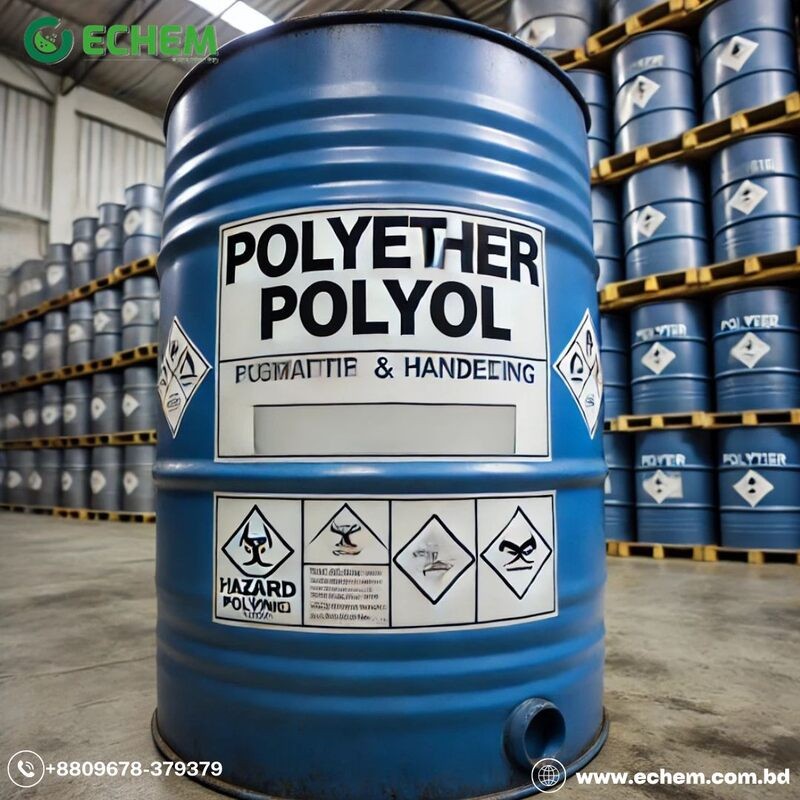Polyol – পলিওল
Polyether polyols are organic compounds with multiple hydroxyl groups (–OH). They are typically produced by the polymerization of alkylene oxides, such as propylene oxide or ethylene oxide, in the presence of initiators. This process allows for precise control over the molecular weight, functionality, and structure of the polyol, enabling tailored properties for specific applications.
- Liquid State: Typically exists as a viscous liquid at room temperature.
- Varying Viscosity: The viscosity can range from low to high, depending on the molecular weight.
- Wide Range of Molecular Weights: Available in a broad spectrum of molecular weights, offering flexibility in polymer design.
- Multiple Hydroxyl Groups: The presence of multiple hydroxyl groups allows for crosslinking and chain extension in polymer formation.
- Diverse Chemical Structures: The choice of alkylene oxides and initiators allows for the creation of polyols with various chemical structures, impacting the final polymer's properties.
Uses:
- Polyurethane Production: The primary use of polyether polyols is in the production of polyurethane foams (flexible and rigid), elastomers, coatings, adhesives, and sealants.
- Flexible Foams: Used in furniture, mattresses, automotive seating, and packaging.
- Rigid Foams: Used for thermal insulation in buildings, appliances, and refrigerated transport.
- Elastomers: Used in shoe soles, automotive parts, and industrial applications requiring flexibility and durability.
- Coatings and Adhesives: Used for protective coatings, bonding materials, and sealants.
- Surfactants: Certain polyether polyols are used as surfactants in various industrial and consumer products.
- Other Applications: Used in the production of lubricants, hydraulic fluids, and other specialized chemicals.
If you'd like to know more about this chemical or need any analysis report regarding this chemical then contact us: support@echem.com.bd.

Login To Comment